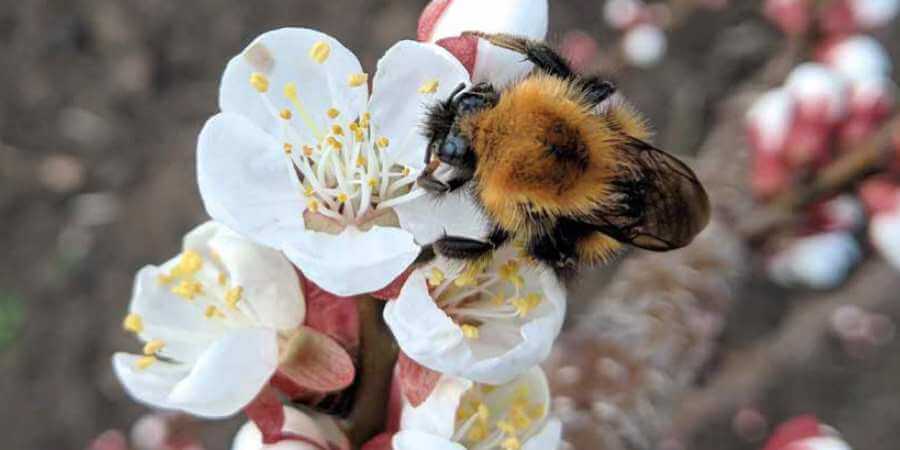
The tree bumblebee was first recorded in the UK in 2001 and is slowly spreading north.
Tree bumblebees prefer open woodland and garden habitats. They can be found nesting in bird boxes and roof spaces.
Tree bumblebee colonies don't normally last long. All the bees die off naturally within a couple of months, except for the queens which find a place to hibernate, ready to start a new colony next year.
What do tree bumblebees look like?
The tree bumblebee has fuzzy, browny-orange hairs on its thorax.
It also has a black abdomen and a white tail.
Are tree bumblebees dangerous?
Tree bumblebees can act defensive if their nest is knocked or vibrated. The bees react strongly to vibrations and sting anyone nearby.
During May and June, they can be seen swarming around their nest entrances. This can be alarming if their nest is in your roof or garden.
However, this swarming is caused by males waiting for the queen to emerge so they can mate with her. The males don't have stingers, so they're harmless.
What to do if you discover a nest
If you're lucky enough to find a nest, don't disturb it or get too close.
Nests won't cause structural damage to your building. Bees don't bore holes or chew wood.
If you find a tree bumblebee nest in your roof space or cavity wall, wait until the nest is empty in autumn and block any entrances.

